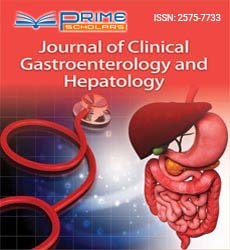Perspective - (2023) Volume 7, Issue 2
The Huge, Empty Organs that make your Gastrointestinal Tract can Move a Layer of Muscle
David Grundy*
Department of Animal Production, King Saud University, Saudi Arabia
*Correspondence:
David Grundy,
Department of Animal Production, King Saud University,
Saudi Arabia,
Email:
Received: 29-Mar-2023, Manuscript No. IPJCGH-23-16558;
Editor assigned: 31-Mar-2023, Pre QC No. IPJCGH-23-16558 (PQ);
Reviewed: 14-Apr-2023, QC No. IPJCGH-23-16558;
Revised: 19-Apr-2023, Manuscript No. IPJCGH-23-16558 (R);
Published:
26-Apr-2023, DOI: 10.36648/2575-7733.7.2.18
Introduction
The GI lot is a series of empty organs joined by a long, turning tube that runs from the mouth to the buttock. The empty organs in the GI plot are the mouth, throat, stomach, small digestive system, digestive organ, and butt. The liver, pancreas, and gallbladder are serious solid areas for the of the stomach related framework. The gastrointestinal tract and the organs that are associated with it make up the digestive system. The gastrointestinal plot is involved the stomach, small digestive system, internal organ, oral pit, pharynx, and throat. There are four layers in the gastrointestinal lot: The mucosal epithelium, lamina propria, and robust mucosae are found in the submucosa, the solid is propria, the external longitudinal muscle layer, the intramuscular space, and the serosa. The empty organs that make up the gastrointestinal GI plot are the mouth, throat, stomach, small digestive system, digestive organ, and rear-end. The liver, pancreas, and gallbladder are the strong stomach related organs.
Description
There are four fundamental components that make up the stomach-related framework: Versatility, handling, ingestion, and release. The stomach related framework changes over the food we eat into energy that our bodies can utilize. Normal stomach related conditions incorporate hiatal hernia, malignant growth, peevish gut disorder, lactose bigotry, and gastro esophageal reflux sickness. Assimilation and catabolism, or the breakdown of substances, includes two distinct cycles: Compound ingestion as well as mechanical handling Microorganisms generally called bugs or microorganisms that have entered your gastrointestinal framework are the justification for entrail infections. The stomach likewise called stomach or stomach related structure is huge for your stomach related framework. A gastrointestinal infection, also known as gastroenteritis or gastro, is an infection of the bowel. An organ that connects the stomach to the large intestine and resembles a long tube. It has a length of around 20 feet and routinely cross-over to fit inside the mid-locale. The small digestive tract is separated into three segments: The ileum, duodenum, and jejunum. In any event, the accompanying general contemplations for stomach or stomach-related distress may be considered: Stop and consume a ton of liquids. Adhering to the Imp diet, which consists of toast, bananas, fruit purée, rice, and a variety of other foods that are each beneficial in their own way and gentle on the stomach. The metabolism, immunity, digestion, detoxification, vitamin storage, and other functions of the body all depend on the liver. Food and liquid are either broken down into smaller pieces or moved through your gastrointestinal tract with the assistance of each part of your digestive system. Your body can hold and move supplements to where they are required when food sources are separated into little an adequate number of pieces. Stool is produced when the waste products of digestion are absorbed by your large intestine. Chemicals and nerves limit the stomach-related process. Peristalsis is the manner in which food goes through your gastrointestinal plot.
Conclusion
The enormous, empty organs of your gastrointestinal parcel have a layer of muscle that permits their walls to move. The development mixes the contents of each organ and pushes food and liquid through your gastrointestinal tract. The muscle behind the food contracts and pushes it forward while the muscle in front of it unwinds to allow the food to move.
Citation: Grundy D (2023) The Huge, Empty Organs that make your Gastrointestinal Tract can Move a Layer of Muscle. J Clin Gastroenterol Hepatol. 7:18
Copyright: ©2023; Grundy D. This is an open-access article distributed under the terms of the Creative Commons Attribution License, which permits unrestricted use, distribution, and reproduction in any medium, provided the original author and source are credited.

